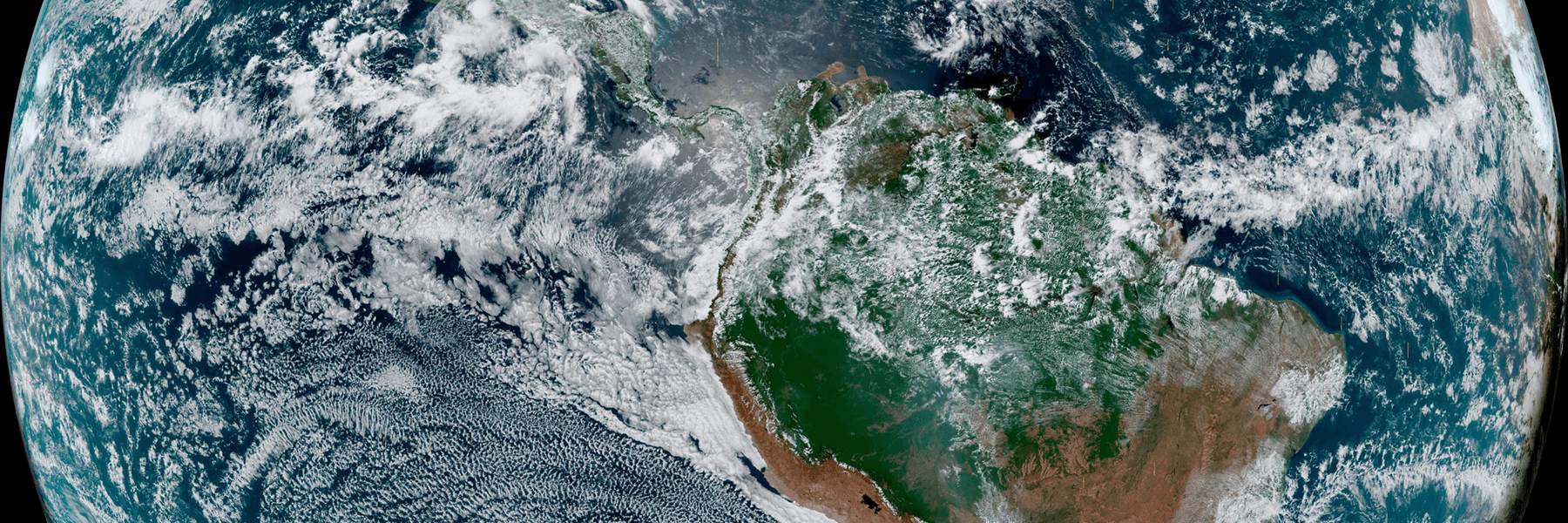Article details how NOAA GFS model performs when incorporating convection schemes from European global model

The weather in the tropics is the engine of the Earth's atmospheric circulation pattern, therefore, correctly modeling the seasonal and year-to-year variations in this region is crucial for improving predictions of weather and climate across the world. Weather and climate variability in the tropics is primarily driven by equatorial waves interacting with smaller scale vertical heat transfer between the ocean and atmosphere – called atmospheric convection. These ‘convectively coupled’ equatorial waves are important for global weather prediction because a better description of the weather in the tropics will lead to a better description of the weather in other places, such as the United States.
Convectively coupled equatorial waves have been a major modeling challenge from weather to climate scales because the onset and propagation of these waves depends on processes that are only partially accounted for in global weather prediction systems. The European Centre for Medium Range Weather Forecasts (ECMWF) model system is world-leading in modelling the tropics for sub-seasonal time-scales, primarily due to better model descriptions of atmospheric convection, and its interaction with equatorial waves.
A new article to be published in Monthly Weather Review details how CIRES and NOAA scientists at the Physical Sciences Laboratory, and their co-authors incorporated descriptions of atmospheric shallow, mid-level and deep convection from the ECMWF model into the NOAA Global Forecast System (GFS). They examined how these new convection schemes interact with existing unresolved physical model descriptions of, for example, the planetary boundary layer or cloud microphysics, and studied the impact they have on convectively coupled equatorial waves.
The researchers found that the simulation using the ECMWF convection scheme in the GFS model is much more prone to organize convection and to propagate convectively coupled equatorial waves as compared to the GFS in its default configuration. The reason for this is primarily because the ECMWF convection scheme allows for deeper cumulus convection to influence its surroundings. In addition, the ECMWF convection scheme also moistens the lower boundary layer to a larger extent than the GFS – important for more realistic transitions from shallow to deep convection and better representation of convectively coupled equatorial waves.
Since the weather in the tropics is dominated by atmospheric convection and its interaction with large scale dynamical waves, this study is significant as it reveals some key aspects needed in the NOAA GFS description of atmospheric convection to improve the interaction between small scale physics (clouds/rain/heat transport) and large scale waves. Improvement of NOAA’s weather to climate predictions in the tropics, as well as their global impacts, strongly rely on further development of physics related to clouds and precipitation. The authors hope that this study will both motivate and provide guidance for such improvements.
Authors of 'Convectively coupled equatorial wave simulations using the ECMWF IFS and the NOAA GFS cumulus convection schemes in the NOAA GFS model' are: Lisa Bengtsson, Juliana Dias, Maria Gehne, Peter Bechtold, Jeffrey Whitaker, Jian-Wen Bao, Linus Magnusson, Sara Michelson, Philip Pegion, Stefan Tulich, and George N. Kiladis (PSL authors bolded)
Posted: September 13, 2019